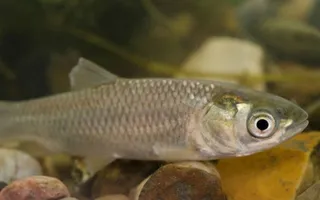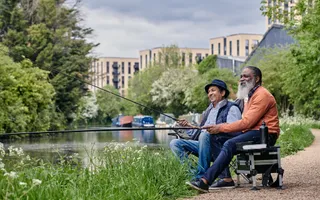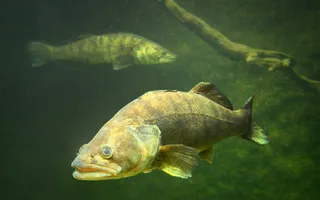Grass carp and our canals
The grass carp prefers slow-flowing rivers and still waters, typically lakes and larger ponds. In many cases, they were first introduced on the Lancaster Canal by British Waterways and Liverpool University to control aquatic vegetation and weeds, as their diet includes a lot of water plants.
Grass carp are also of interest to anglers and are often introduced to ornamental ponds. This species can grow to a large size, although temperatures in the UK are thought to be too low for it to breed successfully here.
How to identify a grass carp
Grass carp are long, slender and cylindrical (almost torpedo-shaped) with a low, flat head and small, upturned mouth with no barbels. They are fully scaled across the body and are a deep bronze colour.
In summer, you can easily spot their torpedo shapes at the water’s surface, warming their backs in the sun.
Lifecycle of a grass carp
Grass carp spawn in water temperatures exceeding 20C and are therefore unable to breed naturally in the UK.
Where to find grass carp
You can find a small population of grass carp living in the Lancaster Canal.







